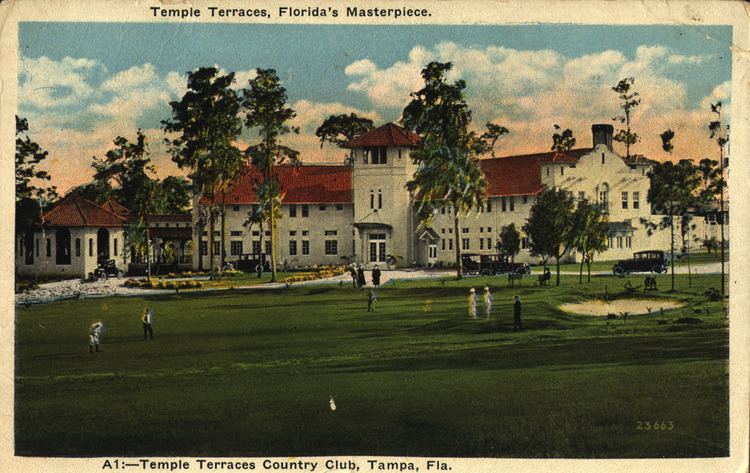Name Malachi Elliott Role Architect | Died August 1967 | |
 | ||
M. Leo Elliott (April 4, 1886 – August 1967) was an architect known for his work in Tampa, Temple Terrace and Sarasota, Florida. His designs include the public buildings and first eight houses in the City of Temple Terrace, Florida (1921), Ybor City's Centro Asturiano de Tampa, Old Tampa City Hall, Osprey School, two buildings that were part of Florida College and the original Temple Terrace Estates, Masonic Temple No. 25 (1928), the 1920 addition to Sarasota High School (with T. A. Monk) and Historic Spanish Point. Several of the properties are listed on the National Register of Historic Places. Elliott also designed Grand Central Place, now home to Mise En Place. The Tampa Gas Co. (1931) building was also designed by Elliott, but was lost after a fight for preservation failed. He also designed the Leiman-Wilson house. Elliott is widely regarded as one of the finest architects in Tampa's history.
Contents

Elliott was born in New York's Catskill Mountains in 1886. He came to Tampa from Woodstock, New York. He married Beth Thompson, daughter of N.O. and Mary Coe Thompson. They had two children: Shelia and M. Leo Jr.
Elliott won first place in design competitions for the Centro Asturiano Club and Tampa YMCA building. On September 2, 1907, Elliott formed Bonfoey and Elliott with B. C. Bonfoey (February 27, 1872 - February 18, 1953) (Bayard Clayton Bonfoey). The firm is credited with designing Tampa City Hall and the Centro Asturiano (1914) at 1913 Nebraska Avenue. The partnership ended with the advent of World War I Bonfoey is buried at Myrtle Hill Memorial Park in Tampa. He was a Cpl Co F 1 Conn Inf SAW.
Elliott set up his own firm, M. Leo Elliott Inc, in 1920. The firm had offices in Tampa, Sarasota and St. Petersburg, Florida.
Background
Elliott was born in Woodstock, New York and attended Cooper Union. He trained Welch, Smith & Provost in New York City and helped design buildings for the Jamestown Exposition of 1907 in Norfolk Virginia.
He came to Tampa in 1907 and soon had success winning design competitions for buildings including the Centro Asturiano de Tampa. Elliott wrote (in his own obituary) that he was born April 4, 1886, in the Catskill Mountains of Woodstock, New York and moved to New York City when he was 15. In the city he worked as an office clerk for an architectural firm. He eventually moved to Norfolk, Virginia where he designed buildings for the Jamestown Exposition. After the expo he moved to Tampa. Elliott retired in 19504 and died in 1967. Granddaughter Lynn Elliott Rydene is an interior designer in Tampa.
City of Temple Terrace
In 1922, Elliott designed the original Temple Terrace Country Club building (now part of Florida College's campus known as Sutton Hall), the Florida College Student Center (originally the Club Morocco Nightclub and Casino, Real Estate Office (today the Temple Terrace Community Church), Chauffeurs Lodge and Garage, Greenskeepers House, Caddie Building, Spring House, Temple Terrace Grocery, Temple Terrace Service Station, Entry Tower gates, and the first eight villa residences for the original developers. All were designed in the Mediterranean Revival/Mission/Moorish architectural styles. The Temple Terrace Preservation Society has made efforts to preserve all of these through the creation of a Certified Local Government
The Club Morocco was the hottest nightclub on the west coast of Florida in the 1920s. Both buildings were part of the original Temple Terrace Estates, one of the first Mediterranean Revival golf course planned communities in the United States (1921). According to the 1988 Temple Terrace Historic Resources Survey, both buildings are eligible for the National Register of Historic Places. In the 1930s, after the Florida economic collapse of 1926, the property and its buildings were acquired by the Florida Bible Institute from the City of Temple Terrace, and were then sold to the founders of Florida College.
